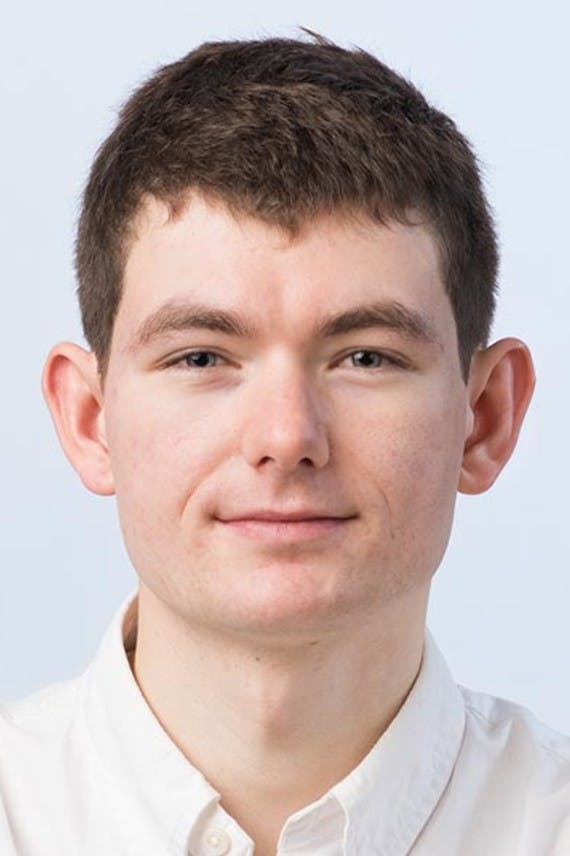How a CDP supports customer data security
The trust between a customer and brand is the foundation of a strong customer relationship. Part of maintaining that trust is sound customer data management and security. Learn how a Customer Data Platform helps you secure your customer data pipeline so that you can build trust throughout the customer journey.

If one were to assign a theme to consumer marketing in the last several years, it would be difficult not to consider something related to security, governance, and/or privacy. In May, 2018, the European Union implemented the General Data Protection Regulation (GDPR), which gave European citizens the right to request access, rectification, and erasure of any of their personal data held by a company, required companies to request consent for specific types of data processing, and more. The California Consumer Privacy Act (CCPA), which followed soon after in January, 2020, granted citizens of California with similar privacy rights to the GDPR, though additionally allowed them to formally object to their data being sold to a 3rd party.
Beyond the immediate need for procedures to handle GDPR and CCPA-related requests, the introduction of these legislations represents a larger shift — customers have been empowered to take control of their personal data. Consumer interest in ownership and governance of their personal data is on the rise, Gartner reports, and gone are the days where brands could collect and share customer data without confirming consent. Before sharing their data, consumers now have the opportunity to evaluate whether they will receive value in exchange and if their information is in safe hands after it is shared.
For brands, however, customer experience is still king, and delivering impactful experiences requires a deep understanding of customer engagements, attributes, and preferences. Access to rich, first-party data is only becoming more important, and collecting it is now dependent on a customer’s trust in a brand.
The greatest risk brands face today is a violation of customer trust.
Situations such as data breaches, failures to simultaneously manage channel- and customer-level consent, and inability to process Data Subject Requests can quickly lead customers to take their business elsewhere, as they will lose trust that their information is secure.
Responsible data usage is largely dependent on how well customer data is organized and how easily data can be updated. Exposure to risk, therefore, becomes much larger if a brand’s customer data is siloed in different systems. When data sets are disconnected, consent attributes cannot be easily surfaced, updated and applied from a centralized record, and different systems may have varying levels of security. To reduce your risk, it’s critical to centralize and secure your customer data pipeline.
How a Customer Data Platform can help you secure your customer data
As the foundation of your data pipeline, Customer Data Platforms (CDPs) help you streamline your growth stack by ingesting customer event and attribute data from across your devices and systems via APIs, SDKs, and cloud feeds, unifying that data to unique customer profiles, centralizing audience segmentation, and forwarding data to your marketing, analytics, and data warehouse vendors.
Streamlining your data pipeline with a CDP has several significant customer data security benefits.
Centralized customer data infrastructure
A few years ago, Mary Meeker’s Industry Trends report found that the average enterprise uses up to 91 cloud marketing tools. When using so many tools, it’s easy for attributes and user events to be housed in different tools, either as duplicate data points or completely separated. For example, a customer’s mobile conversion history may live in your attribution provider, while their audience memberships are tracked in your marketing automation tool, their location history is stored in your location context provider, and some (but not all) of the above exists in your data warehouse. All of these systems may have different plans and conventions for tracking this information, making it difficult to unify engagements and gain a full understanding of the customer journey.
Not only do isolated customer data sets impact your ability to deliver the connected experiences customers expect, but they also have grave security implications. If/when customers inquire about the data of theirs that your brand has stored, it’s difficult to surface data quickly if it is being housed in different ways across a number of different systems. Furthermore, if a customer objects to their data being sold, or permits only a certain category of their data to be tracked, it’s critical for you to easily be able to identify where certain data points live and what is being shared throughout your data pipeline. Inability to do so may result in a significant breach of customer trust.
Customer Data Platforms better enable you to query customer data records by centralizing and streamlining your customer data infrastructure. mParticle’s SDKs and APIs track customer events, attributes, and insights from across channels, tie them to unique customer profiles within the platform, and then forward data to the rest of the tools in your growth stack. Using mParticle’s User Activity View, you’re easily able to surface omnichannel customer profiles and review all of the event, attribute, and insight data tied to that user, up-to-date in real time.
Processing Data Subject Requests (DSR)
When managing data erasure, portability or access requests in mParticle, you’re able to fulfill requests and track data subject requests over time within the mParticle UI.
mParticle supports the handling of DSRs with the following workflow:
- The Data Subject — or consumer — submits a DSR to the Data Controller.
- The Data Controller — or brand — must log, authenticate and verify the request. If they choose to accept and honor the request, the Data Controller forwards a request to mParticle in its role as a Data Processor. The request provides one or more identities for the Data Subject, the type of request (Erasure, Access, or Portability), the time that the Data Subject submitted the request, an optional list of Status Callback URLs.
- On receipt of the request, mParticle sets the status of the request to “Pending” and sends a status callback request to all URLs listed in the original request. This callback includes an expected completion time for the request.
- The Data Controller can check the status of the request at any time.
- When the request is complete, mParticle sends a status callback request to all URLs listed in the original request. For Erasure requests, this callback will simply confirm that the request has been fulfilled. For Access and Portability requests, a download link will be provided.
- For Access and Portability requests, the download link remains valid for 7 days.
This workflow, and historical data subject requests can be managed within the mParticle dashboard.

You can learn more about how mParticle supports the handling of Data Subject Requests here.
Data privacy throughout your technology stack
In addition to supporting the handling of data subject requests within the Customer Data Platform itself, a CDP’s data forwarding capabilities enable you to share consent updates with the tools in your growth stack, and data filtering enables you to selectively forward data based on consent attributes to ensure compliance throughout the stack. mParticle’s Consent Management APIs make it possible to enforce regulatory standards and policies for all of your customer data:
- Define the consent purposes that apply to your business
Different brands use customer data for different business initiatives. mParticle’s consent management framework was designed to be flexible and customizable, so that you’re able to use it to support your data flows. The first step of consent management, therefore, is to define consent purposes. Purposes establish the scope of data collection and processing to which the user may consent. The GDPR recognizes several different purposes for data collection, such as Advertising and Analytics, and covers the possibility of a user consenting to some purposes of data collection but not others. mParticle allows you to track consent state for each purpose on every user record. - Collect and store those consent states within a user’s profile
To track and update consent states, consent is collected as user event data either through client-side SDKs, server-to-server using a direct HTTP implementation, or through a partner feed integration such as OneTrust. Once collected, consent state data is saved to that user’s profile. - Control how data flows through your data pipeline based on stored consent
Once consent states have been attached to user profiles, they can be used to determine which data flows through your pipeline. When building Audiences, consent state can be used to create conditions in the Audience Builder to check a users’ consent state as a requirement for audience inclusion or exclusion. For example, when building an audience to send to Facebook for advertising, you may want to include only users that have an opt-in consent for a given purpose, shown below as “Advertising.”

When forwarding data to any of mParticle’s event integrations, consent state can be used to create forwarding rules that selectively filter data based on a user’s consent state, in real time and per-person. For example, you can choose to only send data when a single purpose is consented:

4. Forward user consent states to your analytics, data warehouse, and marketing integrations
In addition to using consent states to filter the data you are sending downstream, mParticle also makes it possible to forward consent changes themselves to ensure all the tools in your stack have updated consent records. Consent states are currently forwarded in one of two ways.
- Partners can accept raw event batch data from mParticle, helpful for data storage or custom analytics use cases
- mParticle supports forwarding of consent state changes as a Custom Event
You can learn more about mParticle Consent Management framework here.
Security by design
Ensuring that you’re able to organize and control the flow of your customer data is critical to maintaining customer trust. That said, your processes are jeopardized if the infrastructure that you’re using to manage your data is not secure. mParticle is built with security at the core, with standards to support the world’s leading brands in privacy-first industries. When data is at rest within mParticle, we provide 256 AES encryption. When data is in-transition to external systems, we provide Transport Layer Security (TLS) and certificate pinning to prevent your data from being intercepted by man-in-the-middle attacks. Within the platform UI, mParticle offers several user roles for different levels of access to the platform. mParticle provides SAML-based single sign-on, two-factor authentication, and IP whitelisting. mParticle has received ISO/IEC 27001:2013 security certification and SOC 2 Type 2 attestation.
Wrapping up
A sound customer data framework is the foundation to any successful data security strategy. To learn more about how you can process data subject requests and control data forwarding based on consent status with mParticle, you can learn more about our data governance features here.




